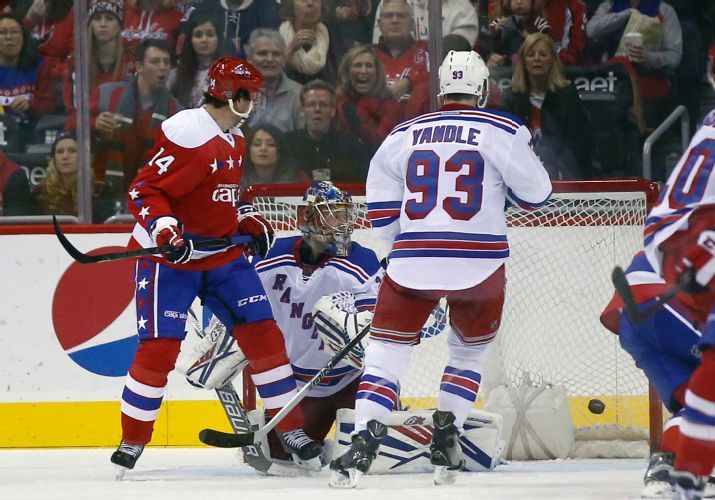
AP Photo/Alex Brandon
It was a Glen Sather staple. Perhaps the last of a dying breed of the black-and-white “all-in” or “rebuild.” It was the all-in move, one that is rarely seen today, that has cost the Rangers four first round picks and the best and most electric prospect this organization has seen in what feels like a generation.
Starting at the 2014 trade deadline, the Rangers went for it all, which was the right choice. They had previously sacrificed a first round pick for Rick Nash, a deal they absolutely had to make and really didn’t cost them much in the grand scheme of things. But they then sacrificed two first round picks –and captain Ryan Callahan– for an aging Martin St. Louis. He brought that scoring punch. The Rangers lost in the Stanley Cup Final in the closest five game series you will ever see.
It was in that series that weaknesses, specifically on the blue line, were identified. Unfortunately it was a weakness that could no longer be addressed, as the lack of a true plan aside from “all-in” was starting to have its complications. The decision to re-sign Dan Girardi rippled up and down the lineup. Girardi, at the time, was still a top-four guy. In the right system, he’s more valuable.
But that’s where the lack of a plan is evident. As has been discussed countless times, Girardi’s weakness is that he is not a good skater. As age and wear and tear start to rear their ugly heads, it becomes more of a weakness. Man coverage only exacerbates that weakness. In the decision to re-sign him, the Rangers didn’t want to commit to another long-term deal, and let Anton Stralman walk without recognizing what they had.
The powerplay was a disaster. They decided a 38-year-old Dan Boyle was a better piece than Stralman, even though Stralman was never given a shot with the man advantage. The result is what we have today. An aging Boyle has minimal effect on the powerplay, and Stralman is lighting it up with Tampa Bay.
With Boyle, the Rangers got another defenseman who was slowing down. He had the name value and the pedigree. The club was willing to sacrifice some defensive lapses for powerplay goals that never came. The thought process is there, but the lack of an integrated plan with the coaching staff and systems was starting to create a stranglehold.
Due to Boyle’s failures, the Rangers were forced to trade Anthony Duclair and another first round pick for Keith Yandle, one of the premier defensemen in the league. It’s not so much the trade, but the timing of the trade that is questionable. This deal came two months after re-signing Marc Staal to a massive six-year contract. With Ryan McDonagh cemented as the top defenseman and Brady Skjei on the way, the all-in move was two years of Yandle with what appears to be no real intention of re-signing him.
Yandle, even with his defensive shortcomings, is the type of defenseman that man coverage needs. He’s mobile, he can move the puck, and he can transition to offense. Someone apparently forgot to tell that to Alain Vigneault, who didn’t start leaning on him until very recently. Lack of a plan.
Now hindsight is always 20/20, and this isn’t to criticize any specific move in general. But it appears that there were few discussions internally aside from “all-in.” Re-signing Staal and Girardi were inevitable. But perhaps the Yandle trade isn’t necessary if the Rangers hold on to Stralman. Or, perhaps even scarier for their opponents, is that the Rangers still trade for Yandle with Stralman. All of a sudden that’s a blue line that is scary.
Instead we have what we see today, which is a scary situation where the Rangers gave up Duclair for a year and a half of a misused Yandle. Will the Rangers trade him to recoup some assets? We know they won’t be re-signing him, so if they keep him, it’s more in the line of the old school “all-in” mold.
The lack of a detailed plan aside from the black-and-white “all-in” philosophy is something that may not have been apparent at the time, but something that may be costing the Rangers a true shot at the Cup. If the right hand doesn’t know what the left is doing, it’s hard to sync up and produce a winner. At what point do the Rangers take a step back and wonder how things got this way? Even then, how in the world can they fix it?
This coming trade deadline –and potentially the draft– is one that will paint the future picture for the Rangers for years to come. Tough decisions need to be made. But more importantly, a unified plan needs to be developed.
Share:
More About:State of the Rangers
